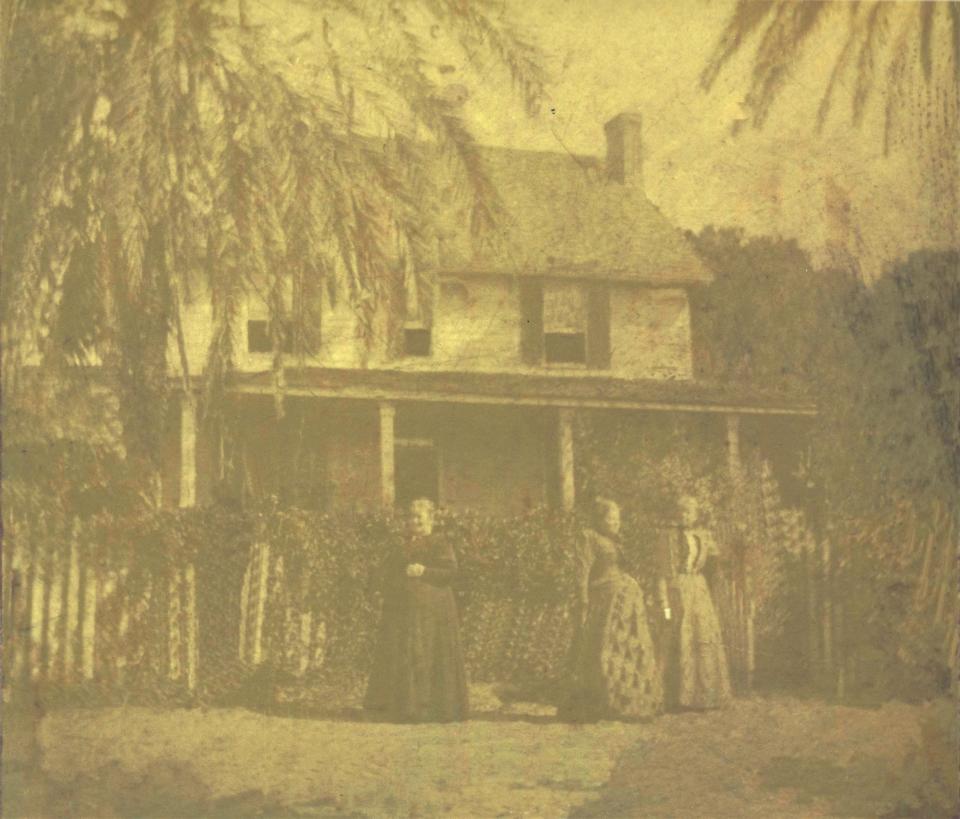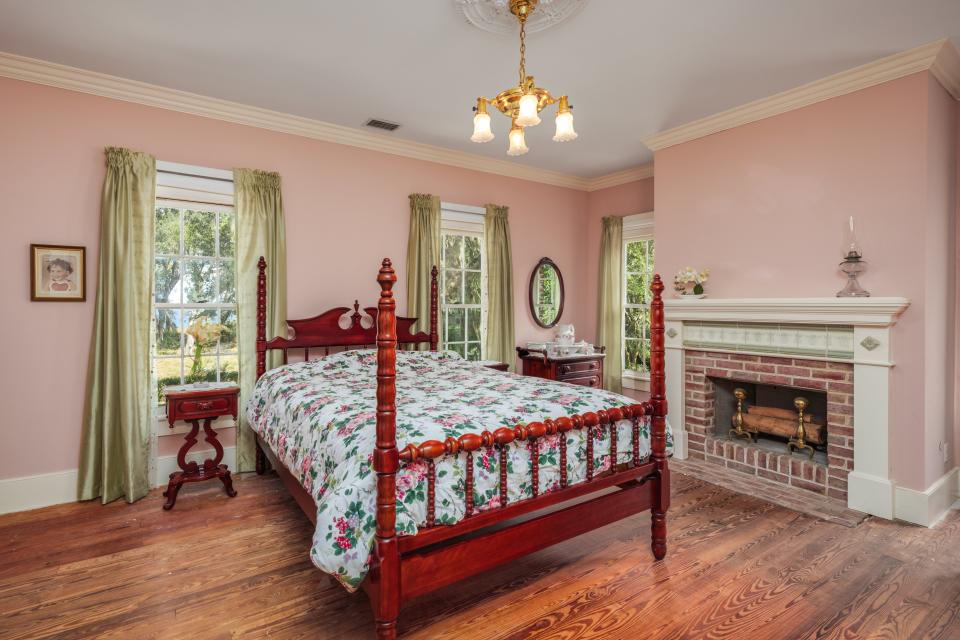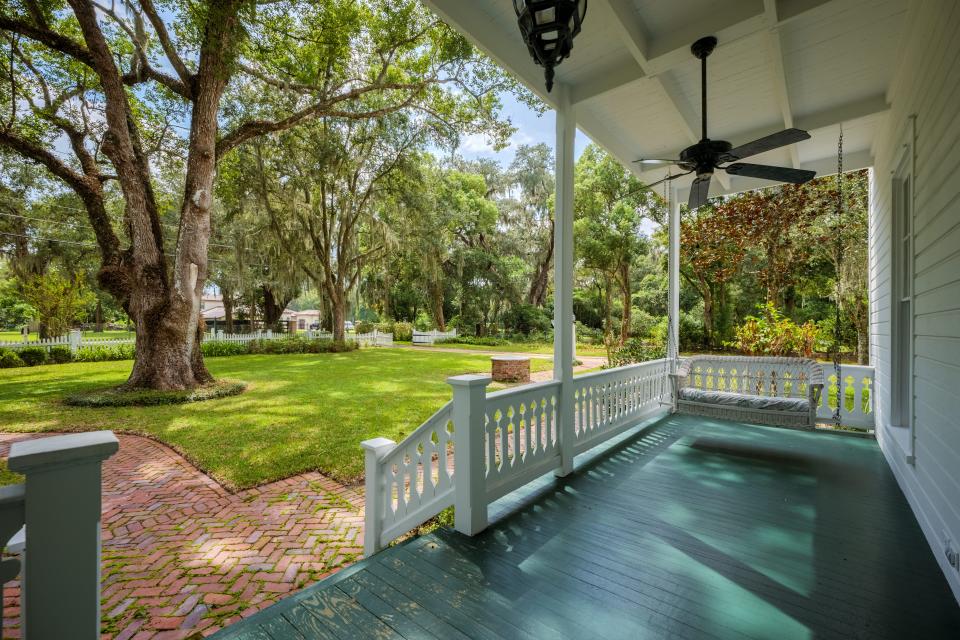Built to last: New generation setting down roots in 144-year-old Mandarin home
The community of Mandarin, just south of the Interstate 295 Beltway, may seem like just another traffic-choked Jacksonville suburb. It's far more than that, however.
Those who have lived here awhile may know about its connection to Harriet Beecher Stowe and the sunken Civil War steamship, The Maple Leaf, which lies submerged nearby. Those who keep up with local politics may even be aware that late Jacksonville City Council member Tommy Hazouri (cousin to current Mayor Donna Deegan) lived there for decades until his death in 2021.
According to a 2019 story in The Jaxson, Mandarin is one of Duval County's oldest settlements dating back to the 1760s when the British took control of Spanish Florida. A number of plantations were established, along with small farms, and the area became a thriving source of fruit, vegetables and other crops.

One of those farmers was John C. Brown, a citrus grower whose family was one of the early settlers of the area. He served as postmaster of the tiny town from 1875 to 1879. One year later, he built a home on land that had been in his family for at least five decades.
Now known as The Brown House, the home has been lovingly maintained and updated over the years, a testament to true craftsmanship. After having just a handful of owners since the Brown family, it went on the market last September and was purchased in February for $900,000 by Stephen Unkelbach, owner of a local event production company.
Unkelbach and his fiancee are expecting their first child in August, and the charming 4,246-square-foot home was a perfect fit. As the house was named a local landmark decades ago by the Jacksonville Historic Preservation Commission, Unkelbach made sure to learn the guidelines for making changes to the structure.

"The previous owner gave me the rundown, and we can do basically anything to the interior; we just can’t demolish it," Unkelbach said. "The structure is good and the metal roof is in good shape. So far we've refinished the floors, done some painting and installed new cabinets in the kitchen."
Represented by Tareq Arsalla of Engel & Volkers, the couple purchased the home from William Skillern, who lived there for nearly 40 years. In the early 1990s, he and his wife updated the plumbing and electrical systems, installed the metal roof and hired well-known contractor Tom Trout to complete a 2,200-square-foot addition.
Before any of that took place, the Skillerns took on the unique challenge of moving the home 100 feet back to the center of the nearly 1-acre lot. As development grew exponentially in the area, Mandarin Road was becoming far too congested with the number of fender benders and other accidents hitting a little too close to home.
One detail Unkelbach also learned from Skillern was that John C. Brown was the grandfather of another well-known Mandarin resident, pottery artist Charles M. "Charlie" Brown. Born in Mayport in 1904, the artist moved with his family to Mandarin when he was a toddler, and he remained a resident there until his death in 1987.

Charles Brown found international acclaim beginning in the 1960s for his fired clay pots, jewelry and wall hangings. It's not entirely clear if he actually lived in The Brown House, but something Skillern found during the course of his renovations may lend credence to the idea.
According to Brittany Cohill, executive director of the Mandarin Museum & Historical Society, Skillern recently phoned her about a fireplace brick etched with "C.M. Brown." He later donated the brick to the museum, where it is now part of their archives on the artist, along with some of his pottery and earlier paintings, perhaps as an example of some of his earliest work in clay.
Skillern was represented in the sale by Jane Chefan of First Coast Sotheby's International Realty, who called the property "stunning," thanks to its expansive lot and partial wraparound porches.
Clay County history: Part of original Fleming family property to begin new era of ownership
"The beautiful millwork and original heart pine flooring really add to the historic aspect of the interior," Chefan said. "We also love the fireplaces in almost every room."
The millwork was also a big draw for Unkelbach, who pointed out that much of the tongue-and-groove flooring came from boats.
"I love the architecture and the attention to detail," he said. "Those floors are 3 inches thick and they don't creak at all."
More on real estate: Which Duval County home sales took top dollar in latest figures? Find out here
Also important for the soon-to-be family of three is a small playground in back of the home. It needs a little sprucing up, but "all the parts work," as Unkelbach put it. Even more importantly, his mom fell in love with the house, too.
"I know there will be quirks and things that need minor repairs over the years," Unkelbach said, "but it’s better built than many newer homes."
This article originally appeared on Florida Times-Union: New owners settle in historic Mandarin home in Jacksonville
